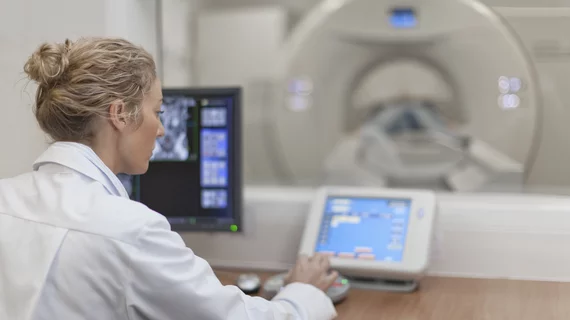Radiologist must apologize to family after missing free gas on CT prior to patient’s death
A radiologist should apologize to an 80-year-old patient’s family after overlooking free gas on abdominal CT images prior to the man’s death, according to a consumer watchdog report released on Monday.
Had “Dr. C” spotted this concern, the individual could have received surgery for his bowel perforation. But “Mr. B” was discharged instead, returning to the emergency department two days later before eventually dying from septic shock stemming from his intestinal rupture.
New Zealand’s Health & Disability Commissioner said the miss was solely attributed to the radiologist, with “no contributing systemic or other issues.”
“The commissioner was critical that the radiologist did not identify and describe the free abdominal gas on the scan,” the May 2021 report stated, noting that the exclusion of such findings was a “significant departure” from the standard of care. “The commissioner recommended that the radiologist provide a written apology to the family, and that the radiology service provide an update on the level of internal audit of its radiologists,” the watchdog group noted.
The inciting incident occurred on a Saturday in 2019, when an ambulance transported octogenarian Mr. B to a New Zealand hospital. He complained of diarrhea and abdominal pain and had been diagnosed with gastroenteritis and an abnormal heart rhythm after grappling with health issues in the weeks leading up to the emergency.
An ED consultant ordered abdominal imaging, and radiologist Dr. C reviewed the scan through an after-hours reporting service. The hospital also took blood samples, which showed markers suggesting inflammation and an immune response.
Dr. C, however, saw no evidence of local perforation at the time. When asked to retrospectively view the images again, the radiologist admitted there were “locules” of free gas around the more proximal large bowel in the upper abdomen. The physician said he typically checked the necessary areas for gas but could not explain why he missed this clue on his first read. He was also not aware of the blood test results, nor that symptoms had persisted for six weeks.
Mr. B was discharged but returned to the hospital days later and eventually suffered a cardiac arrest and died. His son subsequently filed a complaint prompting the commissioner’s investigation. Along with the apology, the watchdog group wants further details on how rads are audited through New Zealand’s radiology service. Dr. C additionally underwent remedial training and an audit of his previous CT reports, which found no other significant issues.

